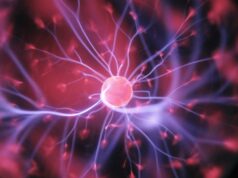The protocol design for a multicentre, prospective, randomised, double-blind study comparing ECAP- (evoked compound action potential) controlled closed-looped with open-loop, fixed output spinal cord stimulation (SCS) was presented by Robert Levy, Institute of Neuromodulation and Pain Relief, Boca Raton, USA, at the North American Neuromodulation Society (NANS) annual meeting (17–20 January, Las Vegas, USA).
“If this study shows superiority in the study arm, it will be a major breakthrough for future studies of paraesthesia independent systems”, commented co-author Timothy Deer, president and CEO of The Spine & Nerve Centers, Charleston, USA.
The Evoke study seeks to improve outcomes of SCS for chronic pain by eliciting and analysing real-time objective measurements of SC activation alongside other neurophysiological properties.
Although Levy acknowledged that spinal cord stimulation has been used for the treatment of neuropathic pain for over 50 years, he put forward that spinal cord activation in response to stimulation has yet to be studied in the setting of a randomised controlled trial (RCT).
Levy explained that all approved SCS therapies—regardless of whether the stimulation induces paraesthesia—are open-loop in that they produce fixed-output stimuli. Yet, according to Levy, these open-looped, fixed-output SCS systems do not take into account the broad range of electrical field strengths emitted to the spinal cord due to changes in distance between the electrode and the spinal cord resulting from normal physiological activity, such as breathing, and movement.
In contrast, closed-loop stimulation—developed using ECAP-controlled SCS—can modulate the current delivered in real-time to maintain consistent spinal cord activation. Levy argued that such objective measures of spinal cord activation may lead to improvements in diagnosis, assessment and the subsequent treatment of chronic pain. Further, they provide the foundation for an “individualised mechanism-based treatment approach,” said Levy, enabling more effective neuromodulation therapies that align with IMMPACT recommendations.
The primary objective of Evoke is to demonstrate non-inferiority of ECAP-controlled closed-loop SCS compared to open-loop, fixed-output SCS in the proportion of subjects with ≥50% reduction in average overall trunk and limb pain and no increase in pain medication at three-months. “If non-inferiority is met, superiority will be tested,” Levy surmised.
Secondary endpoints included patient-reported outcomes regarding: pain, quality of life, sleep quality, emotional functioning, impression of change, functional disability and satisfaction. In addition, an array of neurophysiological properties were analysed: specific features of ECAP (i.e. amplitude variation), conduction velocity, rheobase, chronaxie and the occurrence of late response (neural response resulting from dorsal root activation).
Confirming that enrolment of the Evoke study has now been completed, Levy described the characteristics of the two treatment cohorts. In total, 134 SCS candidates from up to 20 US sites were randomised 1:1, either to closed-loop or open-loop SCS. Patients were required to have a diagnosis of chronic, intractable pain which had been refractory for ≥6 months, as well as VAS overall, back and leg pain scores of ≥6cm. Any patients that were unwilling or unable to discontinue and remain off of any medication used to treat chronic pain that is not FDA approved and/or those that had prior experience with SCS were excluded from the trial.
Regarding the current state of Evoke, data collection and analyses are underway, said Levy, as he maintained that this study is the first randomised, double-blind pivotal study in the field of neuromodulation to measure SC activation in response to SCS
Speaking to NeuroNews about moving forward in the field, Deer theorised: “The next steps will be an evolution to either artificial intelligence in spinal stimulation, or the advent of new lower energy requiring waveforms. The best solutions for the patient will be determined in real world experiences”.













